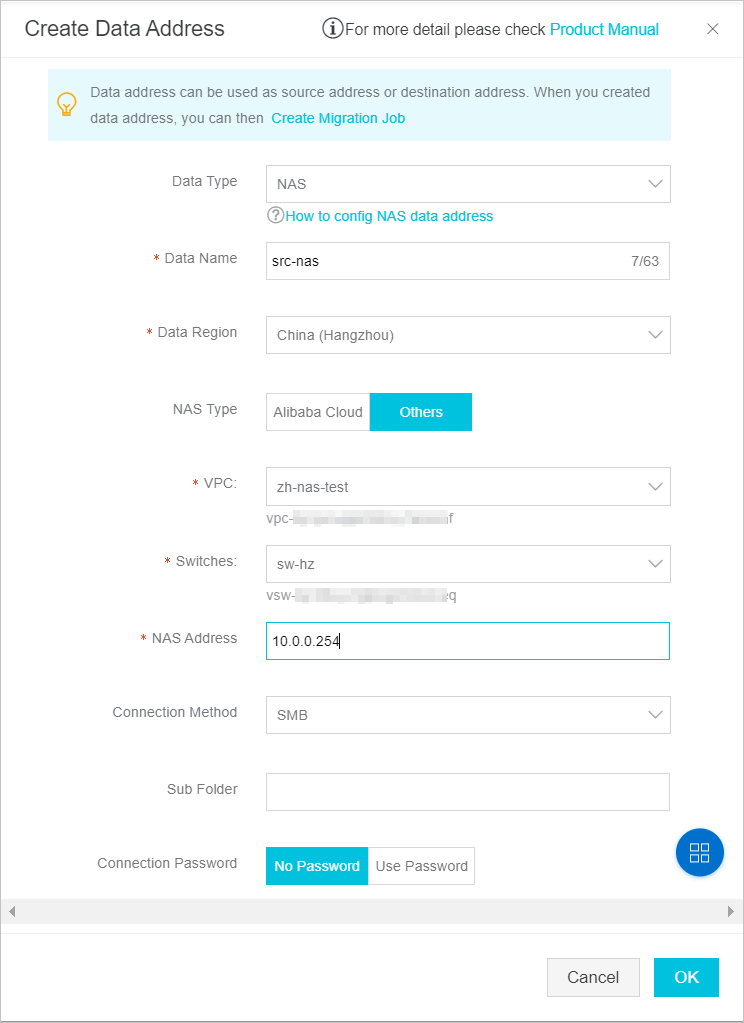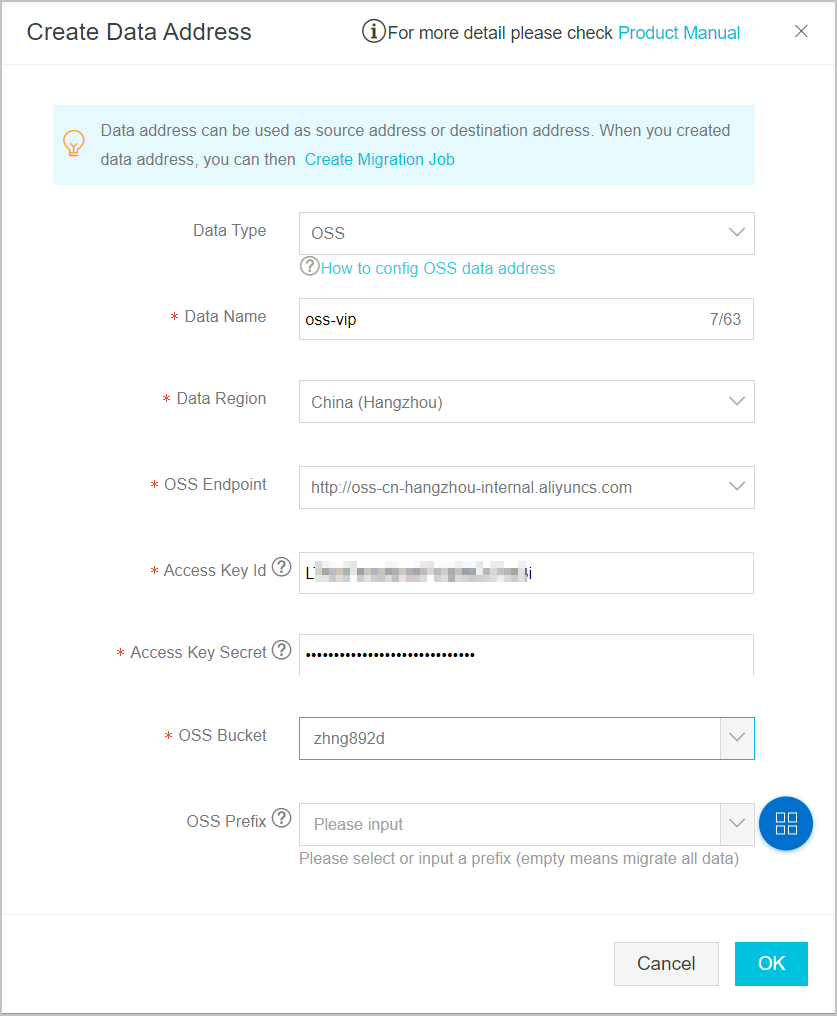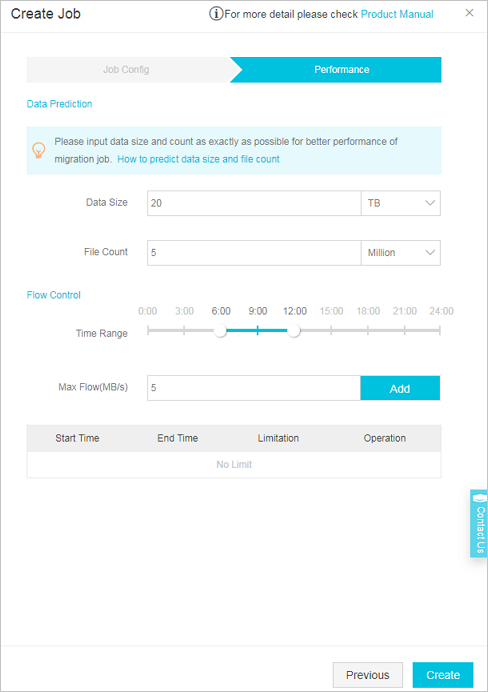This topic describes how to migrate data from an internal Network Attached Storage (NAS) file system of an entertainment company in Hangzhou to Alibaba Cloud Object Storage Service (OSS) for long-term storage.
Background information
An entertainment company in Hangzhou stores data, such as media files and documents, on its internal NAS file server. The data includes 5,000,000 files, which are about 20 TB in size. The NAS server is located in the data center of the company. The server uses the Server Message Block (SMB) protocol and has a firewall installed. The server cannot be accessed over the Internet but provides an internal IP address of 10.0.0.254.
To meet the requirements for subsequent maintenance and online application development, the company needs to migrate data from the NAS server to OSS for long-term storage.
Migration scheme
- Create an OSS bucket in the China (Hangzhou) region and change the default storage location to the endpoint of this bucket.
- Use a dedicated leased line to connect the on-premises NAS server to an Alibaba Cloud virtual private cloud (VPC). Modify the firewall settings of the NAS server and enable access to the NAS server from all the IP addresses in the VPC.
- Use Data Online Migration to migrate data from the NAS server to OSS.
Step 1: Create a bucket and change the storage location
- In the China (Hangzhou) region, create a bucket to store data. For more information, see Create buckets.
- Set the bucket policy to allow the employees of the company to access the bucket. For more information about the configurations, see Add bucket policies.
- Inform the internal employees to change the default storage location to the bucket.
Step 2: Connect the NAS server to an Alibaba Cloud VPC
- Use a dedicated leased line that provides a transmission rate of 1 Gbit/s to connect the NAS server to an Alibaba Cloud VPC. For more information, see Create a dedicated physical connection.
- Modify the firewall settings of the NAS server to enable access to the NAS server from all the IP addresses in the VPC.


